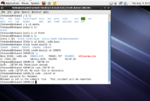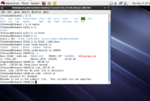blue_moon
Member level 1
cadence default bind
Hi everybody!
Because it was pretty hard for me to install Cadence the first time (thanks Edaboard, it helped A LOT) I made a small walkthrough for the installation. If anybody is interested, I can post it, upload it or give a link to my site (didn't do it now because I don't want people accusing me of promoting my site). Of course, any suggestions for improvements would be appreciated.
Thanks!
Hi everybody!
Because it was pretty hard for me to install Cadence the first time (thanks Edaboard, it helped A LOT) I made a small walkthrough for the installation. If anybody is interested, I can post it, upload it or give a link to my site (didn't do it now because I don't want people accusing me of promoting my site). Of course, any suggestions for improvements would be appreciated.
Thanks!

